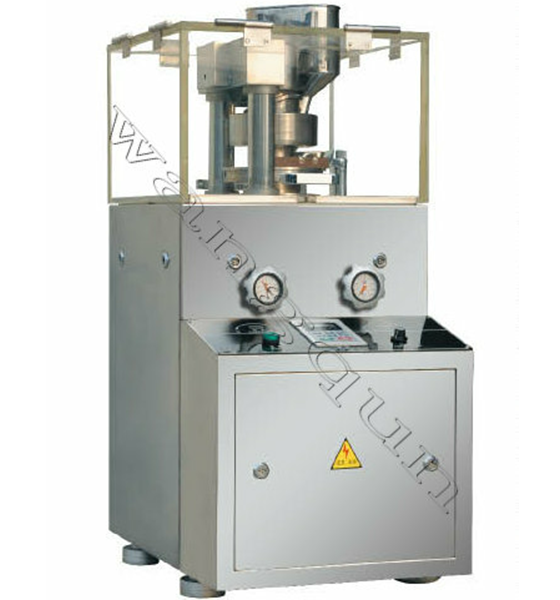Small Tablet Press: Comprehensive Guide for Installation, Specifications, and Maintenance
Introduction
A small tablet press is an essential piece of equipment widely used in pharmaceutical laboratories, research centers, nutraceutical industries, and small-scale production facilities. Designed to provide consistent quality, compact size, and high precision, it enables users to produce tablets in controlled environments with efficiency.
This guide covers the installation schematic, specifications, installation steps, fault cause analysis, and key advantages of the small tablet press. With structured sections, detailed explanations, and practical tables, it is designed to serve as an authoritative resource for businesses, laboratories, and procurement professionals.
Product Overview
The Small tablet press machine is engineered for compactness and ease of use. It is designed for quick setup, simple operation, and reliable performance, ensuring every batch of tablets meets industry standards.
Key Features:
Compact size suitable for laboratory benches and small spaces.
Adjustable pressure for tablets of different hardness and sizes.
Stainless steel body ensuring compliance with GMP standards.
Easy cleaning and maintenance with detachable parts.
Cost-effective solution for formulation development and small batch runs.

Installation Schematic
Before operating a small tablet press, understanding its installation schematic is crucial.
Main parts include:
Upper punch and lower punch: For compressing powder into tablets.
Die system: Shapes the tablet.
Pressure adjustment wheel: Regulates compression force.
Motor and transmission system: Provides mechanical power.
Control panel: For monitoring and operating settings.
(Insert schematic diagram image placeholder here for visual reference.)
The installation schematic ensures users understand the location of components and how they function together.
Specifications and Models
Small tablet presses are available in multiple models to meet different laboratory and production needs.
Table: Specifications of Small Tablet Press Models
| Model | Max Pressure (kN) | Max Tablet Diameter (mm) | Max Filling Depth (mm) | Capacity (Tablets/hour) | Power (kW) | Weight (kg) |
|---|
| STP-1 | 50 | 12 | 15 | 3,600 | 0.75 | 150 |
| STP-5 | 60 | 20 | 18 | 6,000 | 1.1 | 250 |
| STP-10 | 80 | 25 | 20 | 12,000 | 1.5 | 350 |
| STP-20 | 100 | 28 | 22 | 20,000 | 2.2 | 500 |
Notes:
Step-by-Step Installation Guide
Proper installation ensures the safety, efficiency, and durability of the small tablet press.
Step 1: Site Preparation
Place the machine on a flat, vibration-free surface.
Ensure a dust-free, dry environment with proper ventilation.
Confirm electrical supply matches the machine’s specifications.
Step 2: Unpacking
Carefully unpack the machine and check for any visible damages.
Verify that all accessories (dies, punches, toolkits) are included.
Step 3: Positioning
Step 4: Electrical Connection
Step 5: Component Assembly
Install punches and dies according to the installation schematic.
Lubricate moving parts with recommended oil.
Adjust pressure and filling depth before trial run.
Step 6: Trial Operation
Run the machine without material for 5–10 minutes.
Check for abnormal noises, vibrations, or loose components.
Test compression with sample powder to confirm quality.
Fault Cause Analysis
Even with robust construction, operational issues may occur. Below is a fault analysis guide:
Table: Common Faults and Solutions
| Fault | Possible Cause | Solution |
|---|
| Machine does not start | Loose power connection / blown fuse | Check connections, replace fuse |
| Tablets break easily | Incorrect pressure / poor raw material | Adjust pressure, check material quality |
| Uneven tablet weight | Improper filling depth / feeder blockage | Adjust filling depth, clean feeder |
| Abnormal noise | Lack of lubrication / loose parts | Lubricate moving parts, tighten bolts |
| Motor overheating | Overload or prolonged operation | Reduce load, allow cooling periods |
| Powder leakage | Die misalignment or wear | Re-align or replace die components |
Quality Control and Standards
Small tablet presses are designed and manufactured following strict quality control standards:
ISO 9001 Certified manufacturing
GMP-compliant materials for pharmaceutical safety
Rigorous factory testing before delivery
Compliance with CE safety standards for international markets
Quality control ensures that customers receive reliable, safe, and efficient equipment.
Safety Instructions
Safety is a top priority when operating a tablet press.
Always wear protective gloves and goggles during operation.
Do not operate the machine with loose clothing or jewelry.
Ensure emergency stop buttons are accessible at all times.
Disconnect the power before performing maintenance or die replacement.
Keep hands away from the compression area during operation.
Train operators before allowing independent use.
Core Advantages of Small Tablet Press
Compact design: Saves laboratory space.
High precision: Ensures uniform weight and hardness.
Easy maintenance: Detachable parts simplify cleaning.
Cost-effective: Suitable for R&D and small batch runs.
Versatile: Supports pharmaceuticals, nutraceuticals, chemicals, and food industries.
Durable build: Stainless steel structure ensures long service life.
Conclusion
The small tablet press is a versatile and reliable machine for laboratories and small-scale manufacturers. With clear installation steps, detailed specifications, robust fault diagnosis, and compliance with international quality standards, it provides a safe and efficient solution for tablet production.
By following the installation schematic, adhering to safety instructions, and performing regular maintenance, businesses can maximize efficiency and extend the machine’s service life. Its compactness, precision, and user-friendliness make it a smart investment for any facility focused on high-quality tablet production.









 Phone
Phone